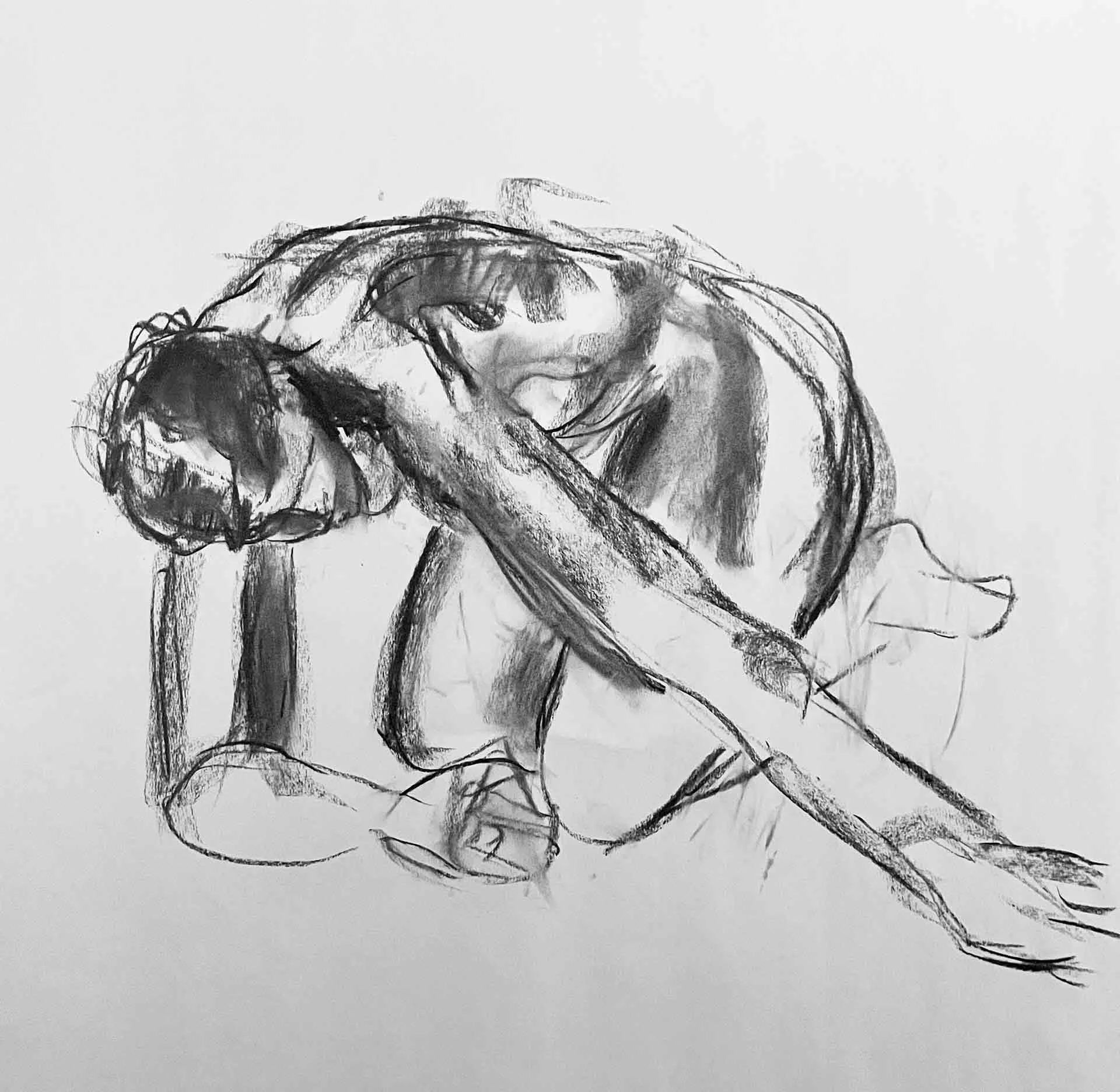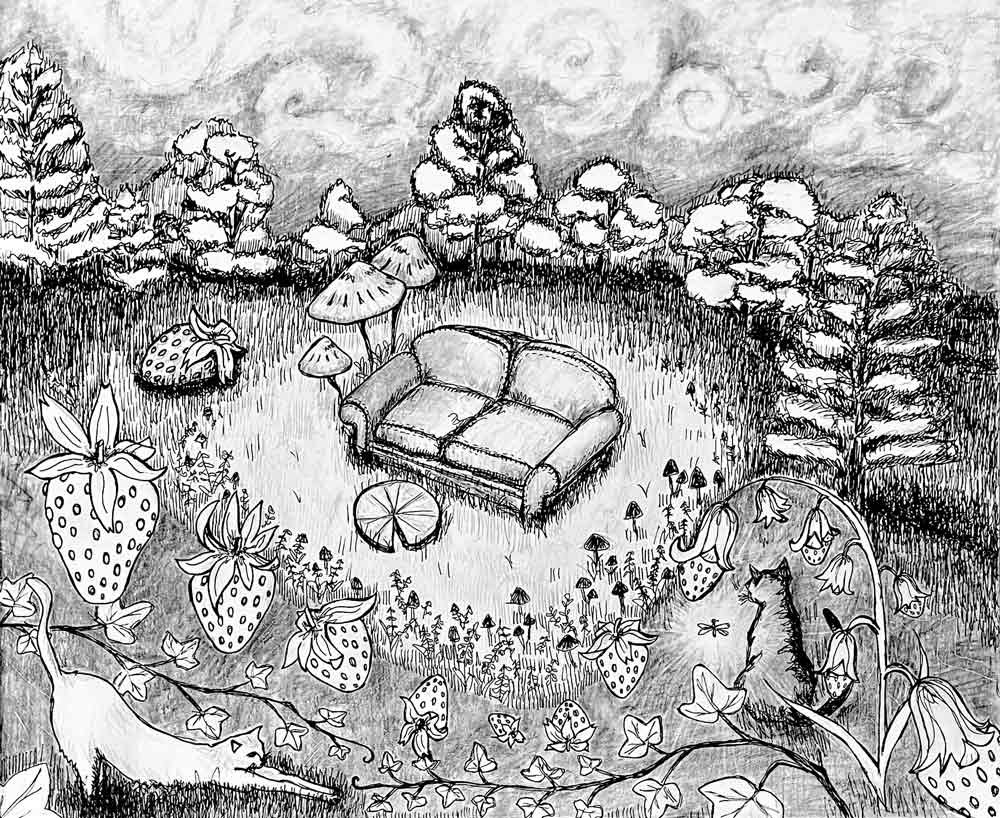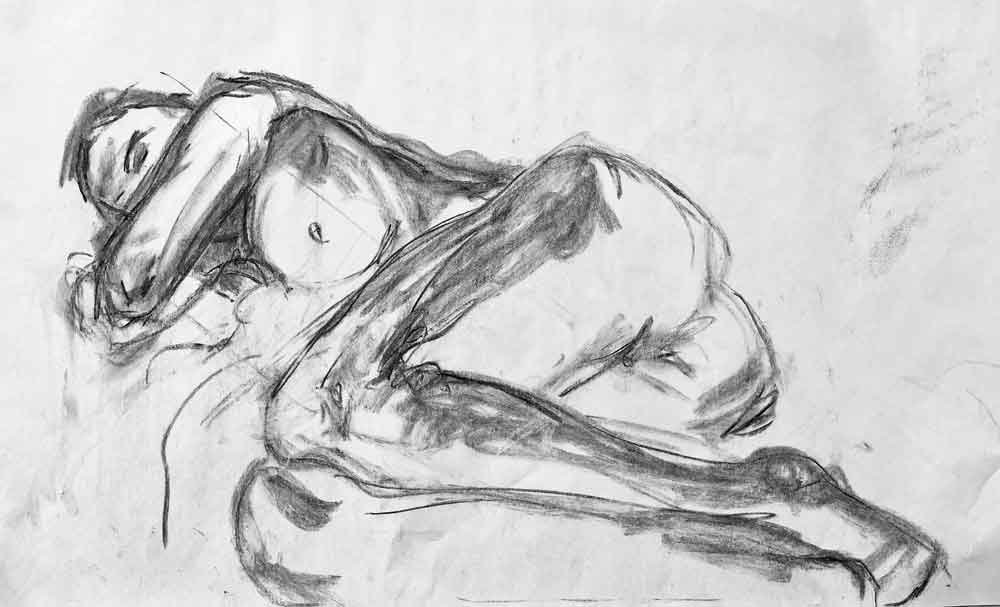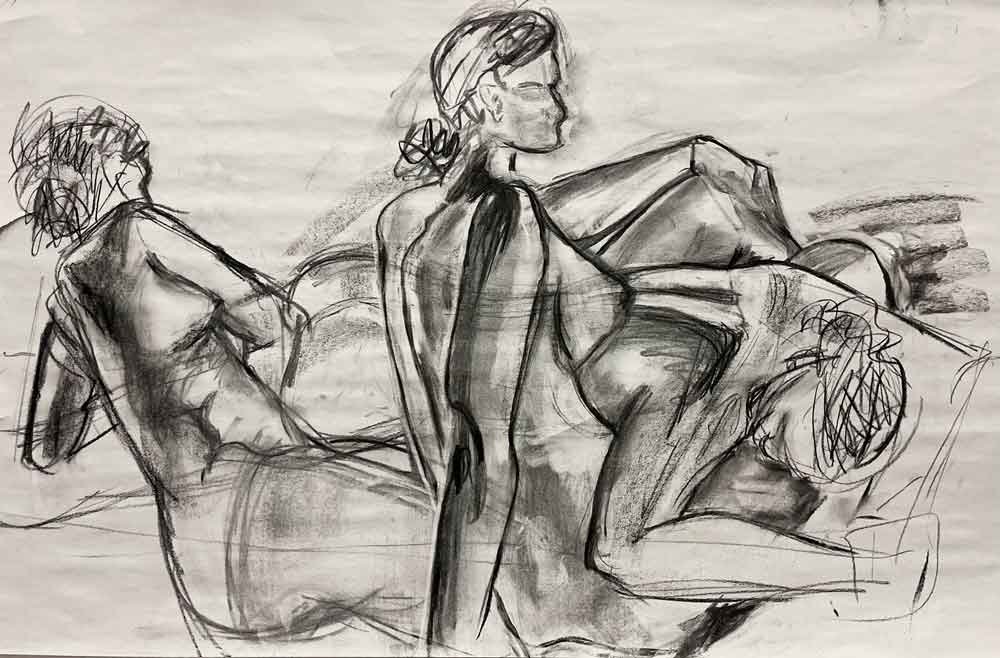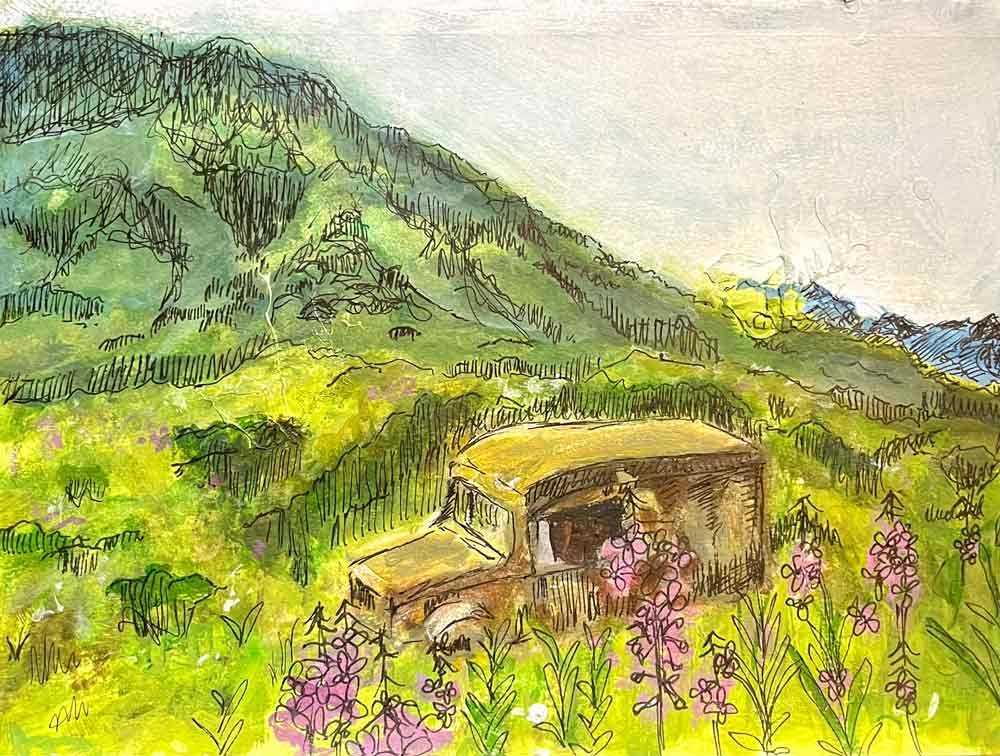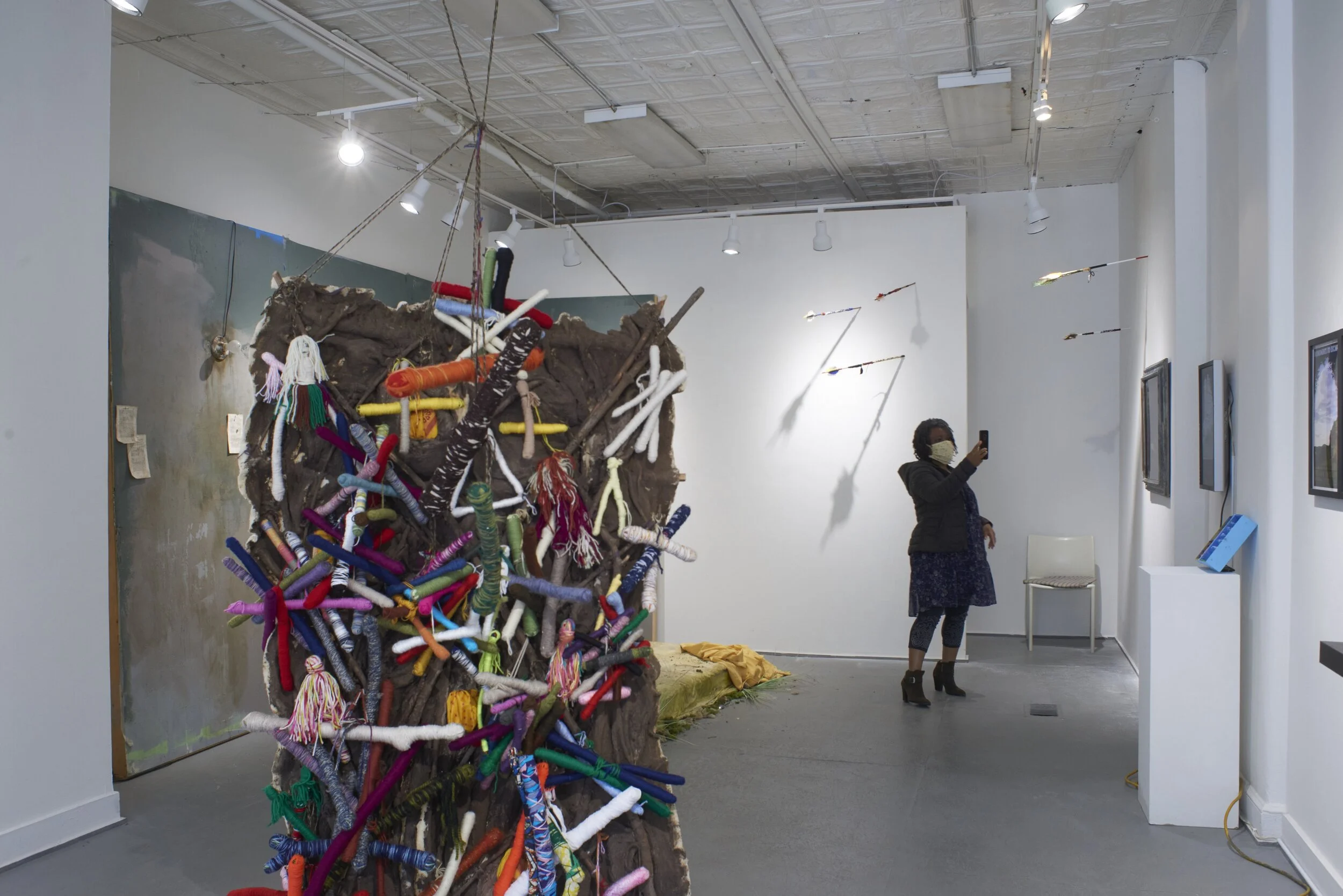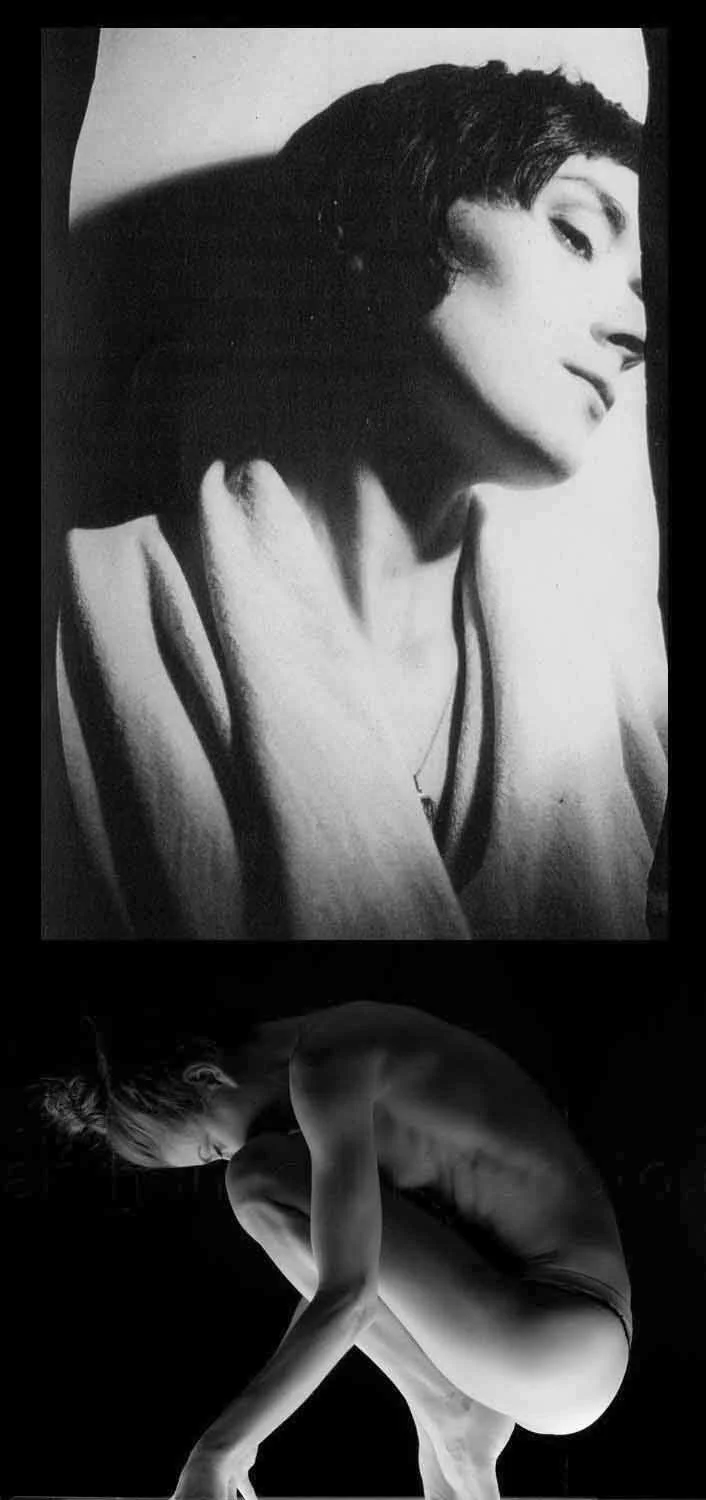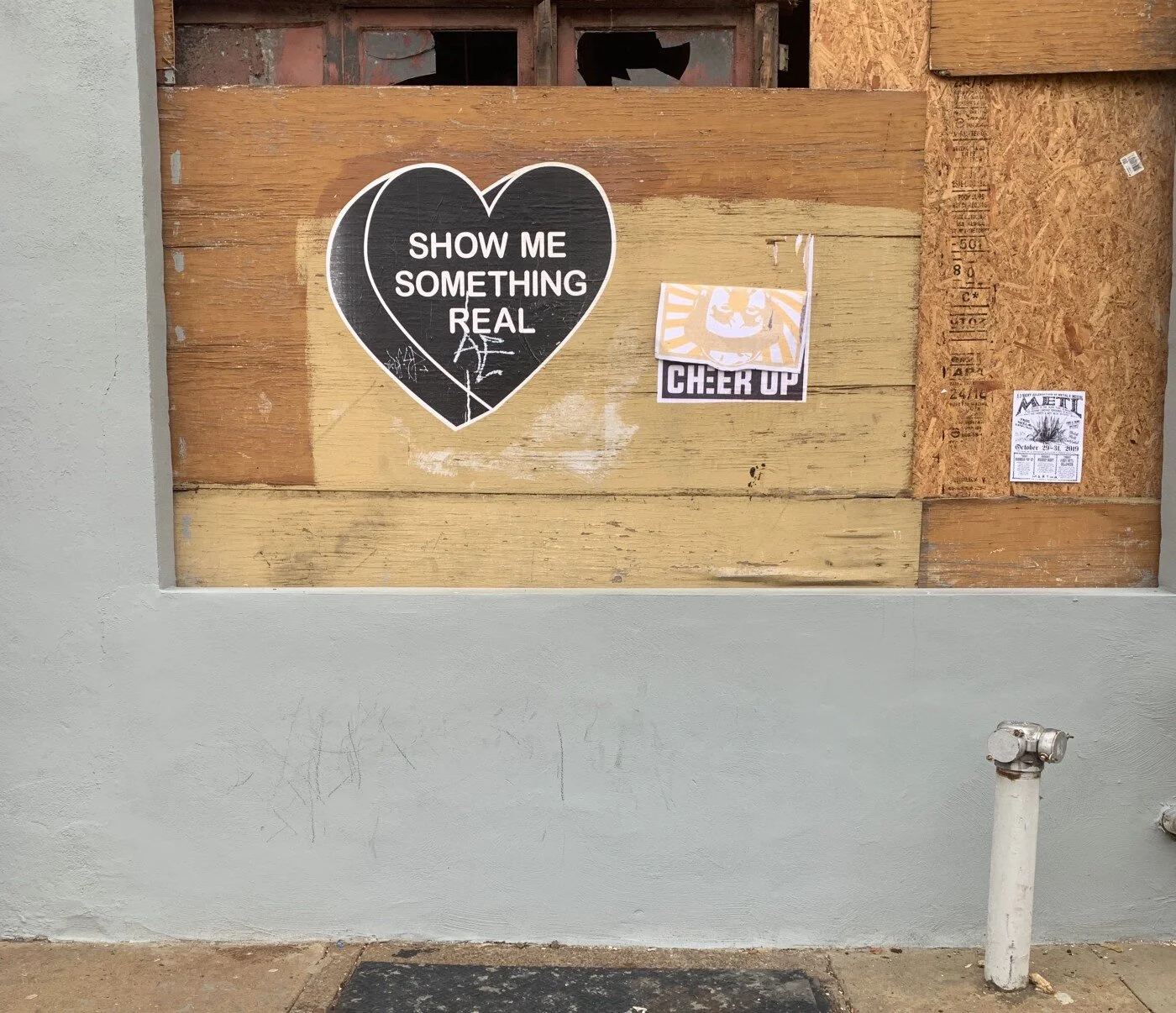CGI lay just across the lot. Felt like another planet, granted, a world in which the sentient beings bore only a rough resemblance, pocked and untucked, to the men on her side of the galaxy. The nerd who opened the “Oddeyes” file for Alya was just such an otherworldly creature, his comb apparently mistaken for a garden tool, plus this Zachary couldn’t hide his crush on her. He couldn’t even begin to hide it, his stare like the full moon, and beneath the moon curved its golden reflection, his wedding ring. You couldn’t help but notice the ring, the poor guy didn’t know what to do with his hands, and for a moment there the actress worried that the studio’s go-cart had carried her back to high school. Was she going to wind up contending with an octopus, all grope and nibble? But as Zachary tweaked his software preferences, he regained his motor control, and Alya could suss out how, here on the Planet of the Function Keys, this get-together was a demonstration of his power. His wonkpower. She knew an invidious look when she saw one, and hadn’t she seen more than one here in the labs, sharp looks, transparently invidious? The Morlocks had spun on their stools to watch her pass.
Then the man had the mockups open, the claws and wings and the wings with claws, plus the beaks and tentacles, and besides that a no-neck head on which, above a boxer’s flattened nose, there bulged a single red-veined eye — and with all that popping open, on the biggest screen in the room, Alya left off fretting over the state of the guy’s marriage or the degree of his Asperger’s. This was about the work. About facing off against a critter as if you knew where the killing blow could come from, and she made a point of getting the names straight; you couldn’t very well develop a decent choreography if you didn’t know the enemy’s name. Kharybdis, kay-RIB-dis, was that it, and what did you call this hulking one-eye over here? Pah, Polly, Polyphemus? One hellacious beastie by any name, that one, and she did wish she could see it move, she told her CGI-guy, meantime indulging in feminine wiles, a dimpling, a simpering. She came up with a name for him, “Zak-Man,” and with that he worked up further animation. She got to see how the wings would unfold from the shoulders, the claws unfold from the wings, and when one troll unleashed its triple-spiked tail, whipping it around a horned carapace, Alya tried out a bit of Thai mixed-martial, maneuvers she’d picked up two or three projects back.
She came nowhere near her chaperone, but he was startled off his stool.
See but…, he said then, see but, I won, I wonder about a movie like this as a career move.
A movie like this? 3-D, CGI, FX? Cartoon action adventure?
On the level of the career, see. I wonder, an actress of your caliber…
Don’t you remember Meryl working with special effects? She did a whole scene with her neck in a spiral like Rubber Woman. Didn’t you see that?
Meryl was Rubber Woman?
They’ve all got a movie like this. Meryl, Sissy, Uma. Cher, Goldie, Sigourney.
See but, the Aliens thing…
That was Sigourney, her franchise, totally.
I, I do get how this project is special. It’s only part 3-D nano-tech …
I know, right? — because has anyone done a movie like this? Think about it. Has any actress gotten a stretch like this?
The woman who wrote the Odyssey. The Awe, Authoress of the Odyssey.
The authoress of the Odyssey. Her secret has lasted a thousand years, three thousand, but now at last the truth comes out. We rip away her disguise.
Her one-man Geek Squad, averting his eyes, clambered back on his stool. Alya bit back a smirk: Rip away her disguise?
Aloud, she went on: Plus there’s a mystery, right, a natural MacGuffin.
See but, that you even know that expression, “Macguffin,” see…
Who wrote the greatest poem in history? Who’s the blind old cripple? Turns out it was a young Greek noblewoman!
Zachary kept his eyes on the screen, the latest hell-spawn. You, you’ve read the book?
The two of them had met hardly half an hour ago, and already he sat there telling her about his dyslexia. Zachary could never make his way through a text so slow and antique, with words like “authoress” — but he assured her he was long familiar with the monsters, he wasn’t that weird, and, see, hadn’t Alya said something about getting a stretch? See, how about his stretch? His team was on board for the full gig, right through to any pickup scenes post-production, because in their corner of the industry, who wouldn’t want to romp with terrors that were part of the, see, the cultural inheritance? Bad craziness, out of the pre-rational originally, yet now, like, cardinal freaks?
Plus a project like this, like action-tech, you, you know how they pay…
Yet to bring up the money sent him into diminuendo. Alya’s new friend dipped his head, frowning, silent, and twisted and twisted his ring.
She could suss things out. Behind her storklike companion she could spy the room’s 800-pound gorilla. The man was thinking of her divorce, to bring up the money brought up the divorce, the irreconcilable differences, everybody on the lot had heard, and on the next lot too, and the next and the next, and anywhere the news spread, anyone with half a brain could figure it was costing a bundle. Simply to return to her own home, this evening — that cost a bundle. That made a role as action-tech eye-candy look like a career move.
Now Alya could softpedal her goodbyes, dimpling again for the Monster Wrangler. She could text her assistant a bland reminder about morning makeup. But both these people, like most of the players in town, kept the same gorilla on a leash. They knew what it cost to maintain a spread-wing home while at the same time grappling in the mud-pit of child custody. The ex too could throw around some power. Nevertheless, once she got home, she enjoyed again the melody of the new security code. She could find the zen in throwing dinner together (tonight, pasta primavera) and eyeballing her pour (Falanghina), keeping it under six ounces. So too she got her warm’n’fuzzies with the kid, though tonight they only spoke on the phone. At least with Caller ID the ex didn’t butt in, and afterwards Alya crossed the house to the gym, thinking yoga but slipping, instead, into mixed-martial. You go, girl. You got some moves, for those homunculi. Scaly old homunculi, they can’t handle your moves. By the time the actress tottered back into her office, she might plop down at her desk and pull out some financials, she really needed to check those financials, but she couldn’t make her way through a single transaction. She couldn’t handle any computations more difficult than the pros and cons of sleeping in yogawear. As for her pour of Grey Goose, the shot was a tad enhanced, the glass a gift from On The Rox, and later on, thinking back, trying to make sense, Alya understood she’d drifted off before her papers and laptop, there in the Aero-Chair, before the monster hopped up onto her desk. She’d woken to find the creature scrabbling through a couple of quarterly statements.
Later on, thinking back, she recalled the vague notion that this must be a prank — sophisticated as all get-out and vicious beyond belief, a prank cooked up south of Satan — and yet she’d had that notion, a flicker of false illumination: this bastard on her desk could only be someone’s idea of a joke. A rat-tailed, hook-nailed bastard, also mantis-armed, plate-faced, terrier-toothed, all no more than a foot high and scrabbling through her papers. One good eyeful and any better thinking was out the window, off along the migration lanes, and Alya was left with vague and impossible notions, or flashes of indignant aggro (those papers were private…), nothing in her head so potent as her screams, an office-full of screams, a double-wing-full, so that if she were getting punk’d she gave the joker just what he wanted, the total scaredy-cat, though nothing so nimble as a cat, rather maybe a marionette in the hands of an epileptic. Her top rode up, her pants slipped down. If this were all a mean trick (and she wouldn’t put it past her babyfaced lead, he’d never seen a piece of scenery he couldn’t chew…), then Alya gave them such a bellowing funkadelic hop-scotch, with so much skin showing, that the video would go viral before the echoes faded. At some point her screams cohered into threats: she’d call 911, she’d call the service, she had Mace, she had a hammer, a poker from the fireplace, and then her head cleared enough for her to find the biggest kitchen knife, a cleaver longer than the critter itself. Her panic relented enough for her to throw in a couple of moves, if she were on video she might as well show some moves, roundhouse from the left, from the right, not too shabby, at least it got the attention of the ogre nosing through her stuff. The little abortion hunkered down, there on the latest bank statement, you might even say it cowered, ducking behind its claws with its tail coiling around its, its ankles or whatever they were. Ugly little animule or whatever it was. Still it waited out her threats, her Thai aggro, it squatted over deposits and withdrawals like the worst nightmare of an audit, and finally Alya returned her right mind, more or less. She could recognize the notion of a prank as insipid, totally, another insipid dream of how your real life must be elsewhere. The dream in which you’re under observation and earning good grades.
Then came the low comedy with the neighbor.
Alya had neighbors, part of the script that she and the ex had been following. No ranch in Montana for them, no compound on Virgin Gorda, they lived in a neighborhood, they walked to the store, even if it what they bought there were saffron and morels. Once in a while, too, they could gab over the fence. They could share a sack of tomatoes or a peek into another soul, and come a night when somebody sent up screams powerful enough to set the spoons and wineglasses tinkling, well, that person had neighbors.
Thank God — or, considering Alya’s current project, the gods? — the face at her door turned out to be phlegmatic. Decidedly phlegmatic, deeply wrinkled, the face of the widower who lived uphill, an industry longtimer who could always say he’d heard worse. He could play it like a trump: he’d seen so much back in Da Nang, everything else was No Thang. He’d caught a magic carpet to the States, he’d swooped down amid the other Vietnamese in sets and costume (they ran the union for years), and tonight was just another ripple in the ride. Just another white girl gone bat-shit, and never mind that she was wearing VC pajamas and a face that called to mind a napalm victim. As for the monster, it’d gone scoot. The gargoyl-ino had shown off its leap at the first long syllable of the doorbell, ahnnng-, and it leaped, -gehlll-l, and it caromed farther, lamp to divan, legs dangling, you thought of a wasp with jet propulsion, and Alya might’ve been startled but she was done with screaming. As the creature scuttled behind the divan, she only let go a long, low syllable of her own, a sigh out of doo-wop.
After that, as she stood in the doorway before the refugee-made-good, well, talk about sets and costumes. Alya cloaked herself in a story. She kept her back to her house.
The neighbor took it quietly, his wrinkles staying put, through from time to time he brushed his thumb across his iPhone, keeping the screen aglow. You could see he’d brought up the speed-dial, one touch would summon the police — and it was kind of the man that he’d come to her first. It was kind of him to think how it would look if she had a black’n’white show up at the house. The paparazzi had a sixth sense for this, a star with her head on a pike, but Alya lived alongside the local sachem, an industry sachem.
Thank God, or the gods. Yet even as she told him so, her smile genuine or almost, the actress stuck to her story. She insisted that tonight was about the work.
A convincing scream, she said, people don’t understand, it’s work.
Now it was his turn to sigh, more Delta than doo-wop.
You’ve been there. Never enough rehearsal, the budget is such a, a bogeyman. Now, tonight, here, I’m sorry, but, where else?
I’ve heard worse, he said.
The screen on his phone had gone dark.
A comedy, that encounter, call it The Beggar At the Gate, except Alya came away feeling as if she’d been the beggar and her neighbor had brought just what she needed. A cup of apathy, he’d brought her, because now as her creepy stowaway re-emerged, wasting no time hopping back up on her desk, she went on past without breaking stride, making for the guest bath. In there she fished out the stub of a spliff from the baggie at the bottom of the ibuprofen jar, her assistant had a dispensary permit, and as she got her first toke she came back into the room and stretched out on the divan. If she’d had a feather boa she would’ve draped it around herself. She sipped on her spliff and sized up her new house pet.
And vice-versa, insofar as she could tell where it was looking, this hybrid of rat and crab and hornet. Its triceratops-head hung above the bookkeeping, long enough for the reluctant host to stop picturing herself with her throat torn open, or with dæmon larva in her belly. Rather she fretted about her wrinkles. At this hour her dimples lost their charm, and the smoking didn’t help, especially not month-old weed, stale enough to send her into a fit of coughing. By the time Ayla got her next level breath, her hideous guest had returned to its invasion of her privacy. Pawing once more through her financials, its movements almost polite, it appeared to be concentrating. It extended a longer claw into a desk drawer and pincer’d out her checkbook. Alya was old-school about the checkbook, too, she kept her own set of figures, and the drawer might’ve popped open during the earlier ruckus. In any case it was time to quench the spliff and drop it back in her baggie, time to fold the baggie back under the ibuprofen and run the bottle back into the guest bath (where a guest might’ve left it, see…). If there were any psychedelia stranger than a monster in your house, it was a monster with a CPA.
Its movements were almost polite, delicate with the check register, and the actress saw no reason not to draw nearer. No reason not to study how the limbs and torso, if about ten times their size, might strike a killing blow. And look, lo — what was prophesied by Zacharia did come to pass!
Today’s mockups, ka-ching! Look, lo, the wings, their veins and texture. So too the tail, the flex of the unused claws, these had an ugliness entirely familiar, as did the ribbing and abdomen. Alya fell into a bob and weave, her offense, her defense, taking full advantage of the synchronicity, her swami-nerd who’d seen the future. Because didn’t every actress have a story like this? A career move that would never have happened without some mad synchronicity? They all had a story like this, some gift freak they’d known better than to look in the mouth, and Gwyneth had ended up with an Academy Award. A gilded dingus without hair or genitals, now there was a household monster Alya could use, and so tonight she parried and kicked, she skipped and threw jabs, and she came up with questions.
Is that all you got?
The wee mooncalf once more raised its head.
Don’t you want to rip out my guts, gnaw on my bones, and leave me nothing but a spot on the floor?
Its mandible retracted, almost sheepish.
Not that Alya could go on trying to read the thing’s mind all night, not with the medical MJ burning in the throat and weighing on the brain. That Grey Goose in the freezer was calling: time to migrate. As for her ugly nocturnal emission here, she had plenty to keep it busy, a couple of scary notices about her investments for instance. And how about that photo album from before the breakup? She and the ex had kept a photo album, sure, printouts and stickum were part of the narrative, and now she dug the book from its hiding place and opened it across the mess on her desk. The shots from the Maldives, why not, she’d rocked that bikini. When some scum with a telephoto lens had caught her topless, when he’d sold the pics to TMZ, well, she’d rocked that too.
Through some miracle she made it to the far end of the bedroom wing — I know, right? — and after that insured herself hours upon hours of unconsciousness, setting her Droid on mute. She figured she retained starpower enough to keep the studio from sending a gofer, for one morning anyway. And when Alya showed up on the lot, it was refreshed and without apology. She hid the chill of what she’d seen before leaving the house, the nips the bastard’s claws had made in the photo album. The book wound up back where she’d buried it, of course, but before that she couldn’t help but notice: divots, nibbles, nips, along the edges of a page or three. Also on a bank alert about a recent withdrawal, itty cuts and slashes, as if her life were a whittle-stick. The recollection gave her a chill, but she could hide the chill, she had enough to contend with right here on the sound stages, in particular her romantic lead. Her solicitous pretty boy: Got your beauty rest? You feeling it, now? If the kid had his druthers, she’d sleep longer than Snow White. He’d prefer just one name above the title, one set of abs flaunted against that blank screen, and come to think, wasn’t that the worst of what Alya had to contend with? Wasn’t that the fission core, that rectangle of dumb pale matte? High time she stood up on her hind legs and showed off her chops, what had she been doing since yesterday if not the work, the chops, and before the boy lost his concerned pout (adorable, Brando goes Disney), she was back in her chiton and cleavage. She had her dialog, that had never been the problem, and the actress got her sword out, she began sketching Z’s before a spot on the wall, and at that point the director had his nose in the latest budget report, but in half a minute he let the papers drop. He nudged aside the principal cameraman. The director needed to see this, a girl and her monster soaring to a height from which they could peer into the very goop of the Unconscious, and choreography wasn’t even the word, not any longer, not the way Alya was feeling it, not the way she was hearing it, the director’s new pitch to the press, another dream of another life taking shape as a murmur in her head, a burst of movieola patter, the words all insect-segments, like “postapocalyptic” or “Pixar-Matrix,” “splatter-saga” or “aggro-buzz” or “B.O.-whammo,” or maybe “S-&-M-Whack-a-Mole,” or then again “myth-o-matic,” “freak-smack” or “Clyteme-nation,” way past the old school like “thumbs-up” or “topline,” instead perhaps “nano-alchemy,” “wanna-palooza,” “blog-catnip,” “retro-viral,” “widget-able,” “gawk’n’gag,” or then again “Oscar-prime” or “Oscar-pimp,” or could be “3D-world,” “world-boff,” “world-preem,” “world-whammo”…
When she came out of the scene the director got her eyeball to eyeball. Loudly he announced that, next, they were doing a full dragonslaying. A Scylla-slaying, and as for the romantic lead, he should dial down.
What?, asked the boy. You want me to play sidekick?
His pout soured. Alya wanted to tell the kid the bile did him good, it was his ticket out of the Mouseketeers, but she didn’t feel like getting her head bit off.
Besides, it wasn’t any second-line player she needed to speak with now. After the Scylla was slain, after she was back at the makeup station getting the gore scrubbed away, she had her assistant call over to the Geek Ghetto. This time the nerd would get the go-cart, and wouldn’t you know it, just talking with Zachary left Alya’s girl with supernatural powers. Suddenly the assistant could read minds. After the call she handed over a folder in which, stashed among the documents, there lay a fat spliff fresh from the dispensary.
As his cart pulled up, her bad-hair boy was on the phone, the conversation intense. He had to use Alya’s name twice before he could ring off.
Awe, awesome, he declared. They’re into a whole 3D-redo.
He kept hold of the phone, perhaps to keep from grabbing her.
They’re back to the storyboards, he declared. Xena-rific, they’re saying.
The guy wasn’t a director, and this made his sweet-talk that much more tasty. The folks from makeup were still in earshot, too.
Warrior Princess Queen of the Underworld. Franchise-ready.
Also Alya knew what the computer jockey got out of being seen with her, and why not indulge him? Why not soften him up?
Finally: Zachary, I ask you — where do you get your ideas?
Overhead, the floodlights had come on, and against the tarmac, the trailer siding, his shadow lengthened and hooked.
See but, Al, Alya, what? I told you I haven’t read the book.
The book, well, a smart guy like you doesn’t need to read it. Smart guy like you, you can imagine what it’s like, for this woman. A gifted young woman.
You, you can tell where it’s going.
You can tell a mile off, no MacGuffin about it, where the girl got her ideas.
The way he gripped his phone, you noticed his wedding band.
The author too, Alya went on, he’s no mystery, one of those old Brit polymaths. If anyone were going to rewrite the Odyssey… But then there’s you.
Behind him, his crooked shadow might’ve come out of a horror-show.
Where do you get your ideas? Do you just close your eyes and, where are we, another world? Everyday you face that blank wall.
Uhh, a blank screen…
She went on staring, narrowly, avid, while with his free hand the nerd found his other, he cradled his phone and fingered his ring, and though he’d switched the Droid to mute it kept blowing up, its message-lights blooming across his narrow chest. When at last he spoke, what came out was distracted and clueless: Cultural inheritance? Nonetheless the actress let it go. What further clarity did she need, when she had the guy’s own breastbone, aglow with its Bat-Signal? He didn’t want to talk about it, her Zak-Man, he couldn’t chase down that pill, because it led back behind the bones, into that breathless, bloody darkness, with its throbbing omnivorous hulks, and after Alya had once more made her goodbyes, after she’d negotiated the traffic and the alarm and she was once more alone in the house, she knew just how to bring her night caller around. She knew how to get her papers scratched and gnawed on, her interiors tagged with rowdy graffiti. She might’ve started growing a claw herself, she had such a grip on her spliff while she dug for the sex tape. She didn’t want the tape she was using to threaten the ex, no, but the one he’d never been able to find, the tape with her previous ex, plus a dose of X, not to mention an extra, a girl from On the Rox. That ought to interest the little troglodyte more than her financials, and she had better paperwork for it too, like the receipts for her abortions. She had the mugshot from when they’d busted the escort service. Alya had taken care of herself a long time before she had to take care of a child, indeed before anyone had called her Alya, and in the photo from the bust, the stare she was giving the officer in charge, she was making sure he got the message — if he gave her the mugshot, she’d be his freak — and she had the shot now, didn’t she? She had rags and offal enough to occupy her nights for a lifetime, and with it, no end of outrageous promise.


